
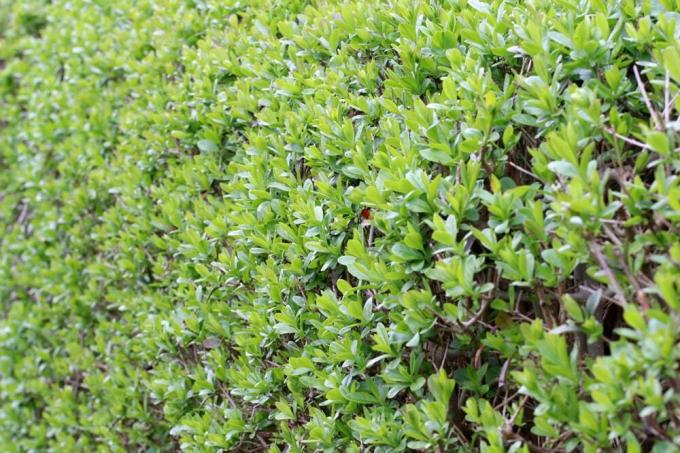
Table of contents
- Hygiene and pruning tools
- Preparation of the hedge
- frequency
- time
- Radical cutback
- care cut
- Caution: Toxic
A privet hedge offers animals a place to live and people protection from prying eyes, it can provide shade and reduce wind. But although the plant is easy to care for and practical in many ways, pruning is extremely important. When is the best time to cut the privet and what do you have to pay attention to? We reveal it here.
Hygiene and pruning tools
Before cutting can take place, the correct cutting tool must first be selected. Blunt scissors or the wrong utensils can cause the cut surfaces to fray, creating entry points for parasites and pathogens. It is therefore important to consider the following factors:
- choose sharp scissors and pruning tools or sharpen before cutting
- Thoroughly clean cutting tools before and after use
- Choose scissors adapted to the thickness of the branches
The following are suitable for cutting back the privet hedge:
- manual and electric hedge trimmers
- pruning shears
- Pruning shears or rose shears
- ratcheting shears
The use of electric hedge trimmers or cordless hedge trimmers is particularly recommended for larger hedges. You can work quickly with them and a good result can be achieved with relatively little effort.
Preparation of the hedge
In addition to choosing the right tool for cutting back, the preparation also includes indicating the course of the cut. Even those who otherwise have a good sense of proportion can quickly cut crookedly and crookedly when cutting the hedge, which can significantly affect the appearance. Orientation helps to achieve or maintain the desired shape.

It doesn't take much effort, the following steps are enough:
- Poles or slats are placed in the ground at the beginning and end of the hedge. They should be higher than the privet and have a stable stand.
- To limit the height, a thread or rope is stretched between the bars. It should not sag, but form a straight line.
- If the hedge is trimmed in height, sticks and thread can be used to provide orientation on the sides. This means that a straight cut can also be made in front of and behind the corner.
frequency
Apart from the preparation and the right cutting tool, the frequency of cutting is also crucial. The fast-growing privet should be pruned two to three times a year so that it grows densely and is kept healthy. The shape can also be maintained more easily and better by frequent pruning.
Especially with young plants, it is important that a pruning takes place three times a year. Otherwise, the plant shoots up, but can quickly become bare in the lower areas or at least appear very light. Regular pruning also gives the plant impetus to sprout again and branch out more.
For older plants, however, it may be sufficient to prune twice a season. Provided that the measure is carried out regularly and at the right time and not too timidly.
time
When the pruning takes place determines the health of the plant. The privet can be done between February and October. During late autumn and winter, however, the plant should not be cut. Whether the pruning takes place in spring, summer or early autumn - it is important in any case that the time is chosen correctly. In any case, the following should be avoided:
- blazing sun as it can cause burns
- wet days and rain, as the cut surfaces then dry and close with a delay
- Frost, as it can cause damage
An overcast but dry day or late afternoon is ideal. This avoids the risk of burns and allows the cut surfaces to close and dry overnight.
Radical cutback
A radical pruning or radical cut can be used on young plants as well as on older ones Plants make sense to achieve the desired shape again and a new, denser shoot to stimulate The shoots are shortened by up to 50 percent - i.e. they lose half their length. This may not seem sensible at first, but it is especially important for older and bare plants often the only way to regain dense foliage and the desired shape achieve.

However, the radical cut must not be carried out between March 1st and September 30th. The reason for this can be found in the ecological balance or in the animal world. Since some bird species like to use the privet hedge as a breeding ground, a radical cut could create nests destroy them along with their eggs or young birds or stress the birds so much that they kill their young neglect.
The correct time is after which the privet has sprout - but before the 1. March. The end of February is therefore ideal. A radical pruning in autumn, i.e. after September 30th, is also possible, but costs the plant a lot of energy, which can delay and reduce budding.
care cut
A grooming cut is not nearly as radical as a rejuvenation cut.
It is important:
- remove bare and damaged branches and shoots
- to bring too long shoots to the desired length
- thin out very thick and crossing ones
The trimming can be done between March 1st and September 30th. However, it is important to be careful not to scare off any birds that may be nesting in the hedge. When the care cut is best carried out depends on the budding. The first sprouting takes place in February or early spring. If a radical cut has been carried out, the next care cut is usually only necessary in June or July. If there was no radical pruning, pruning can take place as early as May or June. From around August, further shoots and buds form. From the latter, berries develop after flowering. If you want to harvest the berries or make them available to birds as food, you should make the last cut of the year as early as possible.

One way to do this is to prune the crop radically before March and in early summer to carry out a maintenance pruning before the new sprouting and the formation of buds take place.
Caution: Toxic
The berries of the privet serve as food for birds, even in late autumn and winter. For human consumption, they are suitable as a liqueur or jam. However, they are poisonous when raw. Even small amounts are enough to seriously or even fatally poison small children, for example.
If small children or pets play in the garden more often, the privet should either be avoided or the berries should be prevented. It makes sense to trim the plant before or during flowering. This avoids the formation of berries and reduces or completely eliminates the risk of poisoning.
However, the toxins are not only found in the privet berries. All other parts of the plant can also cause poisoning. It is therefore crucial to dispose of the green waste correctly and to avoid direct contact with them. Gloves should therefore be part of the utensils when cutting back.
 garden editorial
garden editorial I write about everything that interests me in my garden.
Learn more about caring for plants
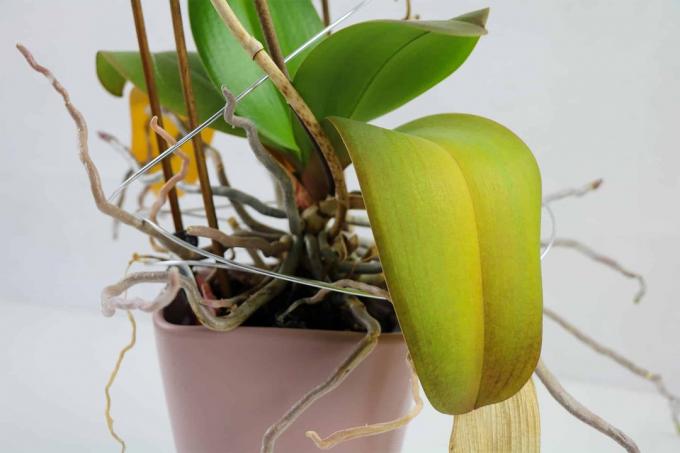
Plant hangs leaves despite water
If plants let their leaves hang despite water, this can have various causes. In order to prevent it from dying off by taking rapid countermeasures, you should find out about the possible causes and effective countermeasures here.
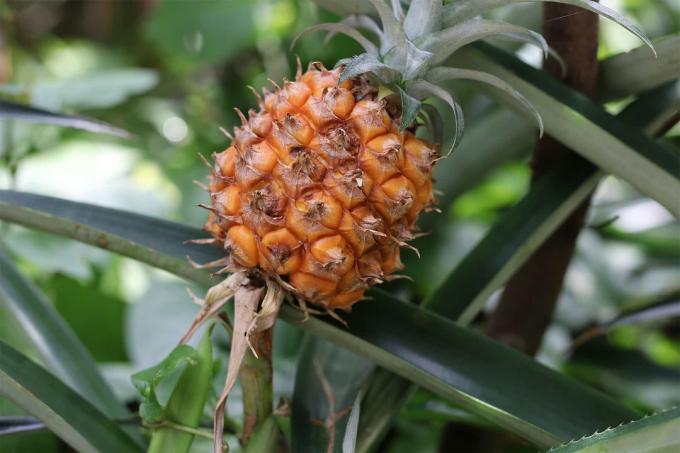
Plants hang their heads: what to do?
If the ornamental plants are cultivated in the garden or in pots and suddenly let their heads droop, then the question quickly arises as to why this can be. However, this is usually due to maintenance errors that need to be checked. If a remedy is found, most plants usually recover quickly.

Repot orchids: how & when to replant
Thanks to more uncomplicated and easy-care new breeds, orchids are now at home on many windowsills. In particular, the Phalaenopsis or butterfly orchid, which is available in countless varieties, is very popular. Read how and when you can best repot the distinctive beauties.

pull tree out of core | 7 tips for growing a tree yourself
Trees can be grown from cores without much effort. There are a variety of plants that have seeds and can be easily cultivated in your own garden. Special classic fruit trees should be mentioned, which are suitable for such a project.
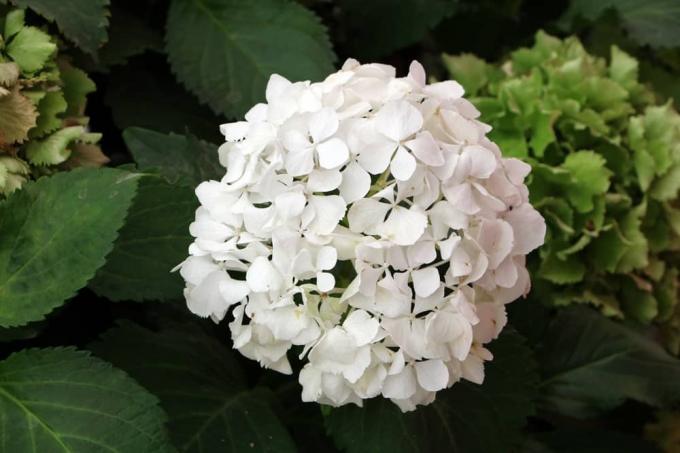
How do hydrangeas stay white? | That way it won't turn pink
How do hydrangeas stay white - this is the question many hobby gardeners ask themselves when the hydrangea changes color. The white often turns into a pink, which is usually comparatively pale or can appear "dirty". Here we reveal how it works.
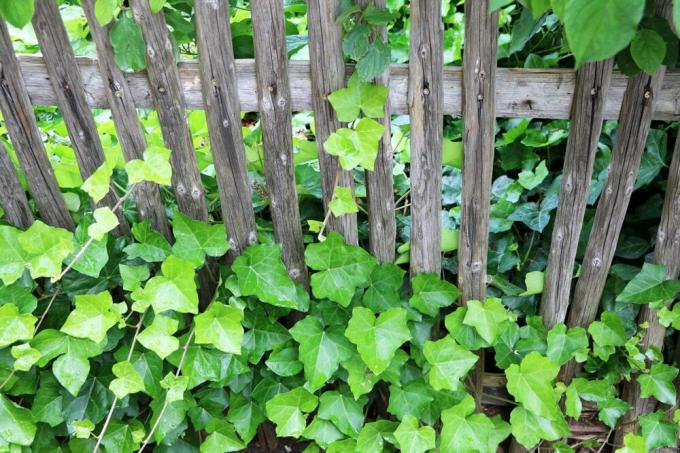
planting ivy | 13 tips on soil, setting & planting
Whether as a privacy screen, climbing wall or terrain greening or ground cover - ivy always works. With species-appropriate care, this evergreen classic will delight gardeners for years with its numerous advantages. In order for the plant to thrive particularly well, the gardener should take these tips into account.



